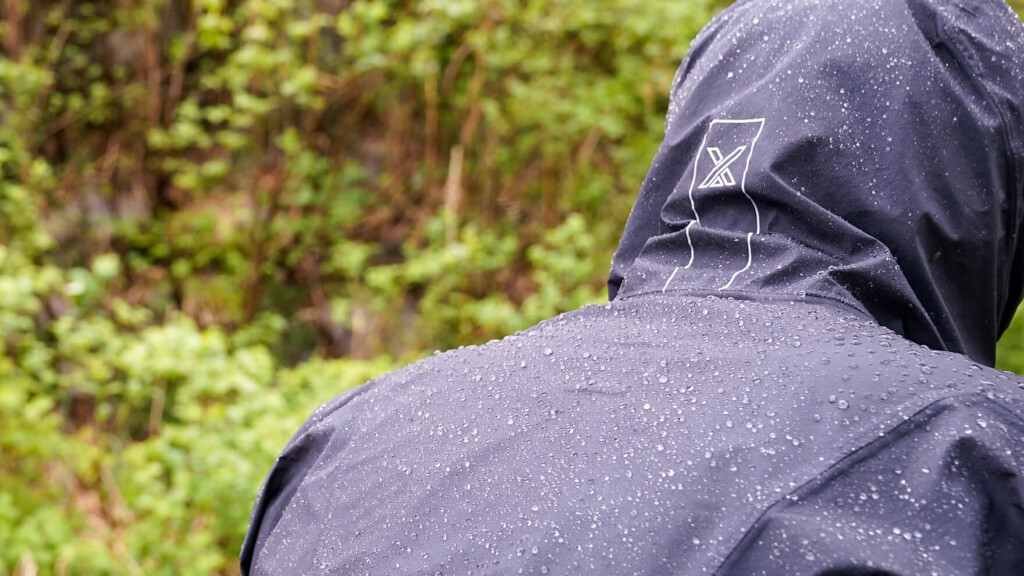
How to choose the best rainwear you want to wear right now and the new and smart outdoor rainwear.
Do you need comfort? Lightness? Waterproof? Choose the perfect rainwear for you from a wide variety of models to suit your situation
Rainwear, which is said to be one of the essential equipment for outdoor activities, has been classified by price range up until a few years ago, but I feel that there was no significant difference in construction. Recently, even on the same mountain climbing, a wide variety of models have been crowed, divided into more detailed areas such as "day hiking," "fast packing," "trail running," "full trekking," and "alpine climbing." It seems that the ever-expanding outdoor industry and mature culture around the world, and the accelerating evolution and competition in technology are also maximizing.
Well, as a choice, I'm very happy that there will be more options, but I can't just let go and be happy. Everyone has the same desire to not regret buying it. However, it is not easy to always catch up with cutting-edge technology and identify subtle differences from the latest models lined up like a star-story, and choose a piece that will satisfy you.
So, this time, taking into account the recent complex rainwear market, I, a mountaineering writer who has been working perfectly at the forefront of rainwear along with this site for seven years, will be choosing some wonderful rainwear that I buy this year from the perspective of a user that is sure to be very satisfied with. Furthermore, in the second half, we will also summarize how to choose cutting-edge, smart rainwear that even beginners can undoubtedly find the best model, taking into account the recent advances in technology.
However, the field of rainwear is a category that requires extremely complex knowledge, especially among outdoor gear. When you try to explain everything from one to ten, you will need to talk so long that you will soon feel sleepy. The purpose of this guide is to help outdoor enthusiasts get meaningful information about choosing a rain jacket, not to offer more detailed knowledge about rainwear than anywhere else. In that sense, in this guide, I will focus on a position that bridges the needs of people who need to choose rainwear for the first time and those who want to choose carefully, and write as simple as possible, while touching on technical topics that are inevitable. The troublesome thing about rainwear is that it can last a long time, even if you say something like that. For those who have never chosen rainwear before, to those who want to keep up with the latest information on rainwear, please feel free to join us, but it's a little long.
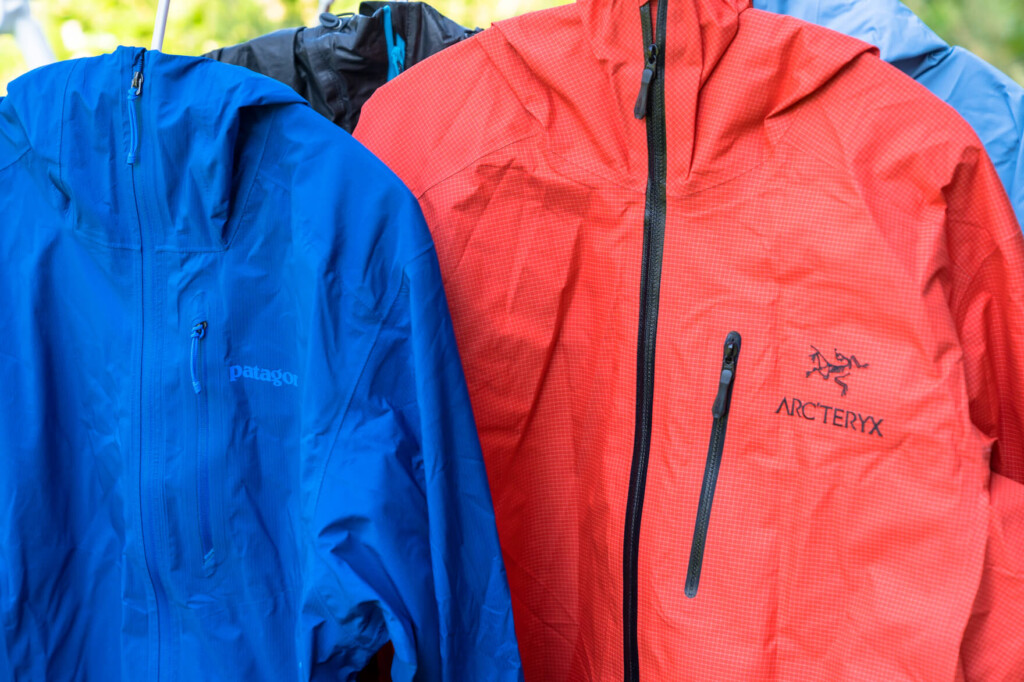
table of contents
- The wonderful outdoor rainwear of this season
- Best All-Round Division: Arc'teryx Beta LT Hadron Jacket/THE NORTH FACE Pumper Jacket
- Vest Hiking Division: Patagonia Storm 10 Jacket/Patagonia Calcite Jacket (other PaclitePlus products)
- Best Fast Packing Division: MONTANE MINIMUS STRETCH ULTRA JACKET
- Best Running Division: THE NORTH FACE Strike Trail Hoodie/Patagonia Storm Racer Jacket
- Best Cost Performance Division: MIZUNO Belgtech EX Storm Saber VI Rain Suit
- Best Trekking Division: Mont-bell Storm Cruiser Jacket
- Best and High Load Activity Division: Goldwin Fast Shell Light Jacket/Teton Bros. Yari Jacket
- Best Ultra Light Division: Rab Phantom Pull-On
- Special Award (personal favourite): Arc'teryx Alpha SL Anorak
- How to choose: 7 points to keep in mind when choosing the best rainwear
- Point 1: Two basic things: rainwear that can be used outdoors
- Point 2: Choose the fabric structure (layer) - Use different things by knowing what you are good at and how you are good at
- Point 3: Waterproofing performance - Check the overall jacket construction rather than numbers -
- Point 4: Relaxation (breathability) - Be careful of the new trendy "breathable" jacket -
- Point 5: Fit and ease of movement - Try on and try your body in action
- Point 6: Weight - Considering balance with durability
- Point 7: Pockets and other usability
- summary
The wonderful outdoor rainwear of this season
Best All-Round Division: Arc'teryx Beta LT Hadron Jacket/THE NORTH FACE Pumper Jacket
Arc'teryx Beta LT Hadron Jacket
- Weight: 255g
- Waterproof and breathable material: Hadron™ 3L Gore-Tex fabric
By using Hadron™ LCP (liquid crystal polymer), a proprietary fabric, for the outer material, it achieves lightweight and highly durable material that has never been thought of before. It combines a sophisticated silhouette and ease of movement, making it stable and comfortable to wear, high-quality detailed parts, and hand warmer pockets that are easy to use for everyone, while eliminating waste. Suitable for all-around activities such as mountain climbing, climbing, trail running, cycling, and everyday life.
Among the Arks, the latest model in the Beta series for mountains in general is terrifyingly unsatisfied. In that sense, this year's No. 1 all-around category is undeniable. That's why the price is a bit surprising, but it's probably within the acceptable range if you consider it to be a piece of clothing for a lifetime.
THE NORTH FACE Pumper Jacket
- Weight: Approx. 250g (L size)
- Waterproof and breathable material: GORE-TEX Active C-Knit Backer (3 layers)
All-around lightweight, comfortable rainwear that combines lightness, comfort and protection, while also providing a detailed and easy-to-use experience. The GORE-TEX Active™ C-Knit Backer, which is used as a waterproof and breathable material, is a high-end material that is extremely waterproof and has excellent breathability while keeping the weight down as low as possible. This finest material is made thin, supple, comfortable to wear and feels good on the skin and is easy to move in. The outer material is also high spec, and it is amazing how water repellent it does not deteriorate even if you continue to shower it in a strong shower for a long time.
The front zipper is smooth and waterproof, and the double zipper top and bottom can also be used as ventilation. The hood is large enough to fit a helmet on, and the brim is made of hard material to prevent rain. This is a piece that is easy to use for a wide range of purposes, from hard activities to regular hiking, and is packed with seriousness from the North Face to ensure that you don't forget to take care of its smallest considerations to use safely, comfortable and conveniently, while eliminating waste.
Vest Hiking Division: Patagonia Storm 10 Jacket/Patagonia Calcite Jacket (other PaclitePlus products)
Patagonia Storm 10 Jacket
- Weight: 235g
- Waterproof and breathable material: 3L H2No Performance Standard Shell
The fabric is so thin, soft and supple that you wouldn't expect from a three-layer fabric, and the good pattern that combines a subtle silhouette and comfort makes it a wonderful comfort to put on the sleeves. Thanks to the fine three-dimensional cutting and slight stretchability, it maintains comfort even when you are on the move, and the unique material, "H2No Performance Standard," provides ample performance when it comes to waterproofing and sweat removal.
The pockets are spacious and light on the chest and left and right, and even though they are light, they are well-suited, and they also have packable designs that can be rolled up into the chest pocket to store them in a packable place. It combines looks, comfort, ease of use, and the unique combination of Patagonia is recommended for those who are new to outdoor wear.
Patagonia calcite jacket
- Weight: 411g
- Waterproof and breathable material: GORE-TEX PACLITE Plus
The runner-up is a rain jacket made of GORE-TEX PACLITE Plus material. This new 2.5-layer waterproof and breathable fabric (in G's opinion, two layers) is perfect for carrying on light hiking because of its lightness, high waterproofness and solid breathability. The lining has evolved to make it look surprisingly smooth and comfortable to the touch.
Many outdoor manufacturers produce rainwear using this material, and in that sense, you can choose the specific model according to your preference, but personally, I love this Calcite jacket overall. It's comfortable to wear and good style, but the main reason is the abundant pockets and the pit zip under the armpits (ventilation). In humid environments like in Japan, the ventilation function is very appreciated as the breathability of the fabric is often not enough. However, the weight is slightly heavier, so if you don't like that, we recommend another lighter PACLITE Plus model.
Best Fast Packing Division: MONTANE MINIMUS STRETCH ULTRA JACKET
- Weight: 192g
- Waterproof and breathable material: PERTEX® SHIELD + Stretch
MONTANE, an up-and-coming outdoor brand from the UK, specializes in products that aim to provide high-tempo mountain activities such as fast packing and trail running. This model also features a tight silhouette that fits the body, and a stretchy fabric, providing a high level of excellent breathability and ease of movement.
It also comes with two pockets (and has a hole in the earphone cord), making it suitable for not only for serious running purposes but also for hiking with lots of luggage. It's truly perfect for fast packing. The flashy consideration is still as usual, including the snap buttons that can fasten the front without having to tighten the front zipper, and the night reflectors placed on the front and back for small areas.
Best Running Division: THE NORTH FACE Strike Trail Hoodie/Patagonia Storm Racer Jacket
THE NORTH FACE Strike Trail Hoodie
- Weight: Approx. 115g (L size)
- Waterproof and breathable material: HYVENT Flyweight (3 layers)
An ultra-lightweight rain jacket designed for use in lace. The unique HYVENT Flyweight (3 layers), an ultra-thin material of 10 denier, has amazing specs of 20,000mm water resistance and 40,000g breathability. The 115g weight is slashed to the limit, with no pockets and the cuffs, hem, and hood, and the clear color that allows lace bibs to be seen through, are only available in trail running, and races that are run to reduce one second. That said, the smooth, three-layer lining is comfortable and very comfortable to wear. This is a piece that will satisfy anyone who is looking for rainwear to run in the mountains.
Patagonia Storm Racer Jacket
- Weight: 198g
- Waterproof and breathable material: 3L H2No Performance Standard Shell
The eccentric design, which looks like an apron, will immediately tell you how grateful it is for trail running. A unique cutting method that allows you to carry the pack on your back without being cramped. Furthermore, by opening the zippers diagonally on the left and right sides, you can easily access the bottles and small items pockets on the front of the pack. You can quickly take off and put on and take off while carrying a backpack, keeping the pack wet even while you're on, and replenishing water and food while still wearing it, making it a perfect design for trail runners.
This zipper structure is not only convenient, but also allows for more dynamic ventilation when opened wide. Open the left and right zippers all the way down to the bottom of your chest to get plenty of outside air. Although it is slim, it is well-made and comfortable to wear, making it an impressive Patagonia. I also like the ease of use, such as the packable design that can be stored in the mesh pocket on the back of the neck, and if the above Strike Trail Hoodie is the number one classic in the running category, this is a great model that is unique and can never be missed.
Best Cost Performance Division: MIZUNO Belgtech EX Storm Saber VI Rain Suit
- Weight: 550g in total (M size)
- Waterproof and breathable material: Belgtech EX
A world where affordable rainwear can be purchased at home improvement stores, including everyday use. However, this model is unmissable in terms of material performance that is by no means comparable to top mountaineering brands, while also providing reliable mobility created by top sports brands, and most importantly, the top and bottom sets are priced at a different level. Of course, there are factors that should not be greedy, such as weight and durability of the fabric, but this is enough for first-time users. A wide variety of colors are also great.
Best Trekking Division: Mont-bell Storm Cruiser Jacket
- Weight: 254g
- Waterproof and breathable material: GORE-TEX Fabric 3 Layers GORE C-Knit Backer Technology
Mont-bell's signature work, which has produced countless products, is the benchmark for outdoor rainwear for Japan, and is an unstoppable long-selling product. The reason why it has been loved for many years is the functional beauty that has been pursued to the fullest by manufacturers who know everything about mountain climbing in Japan. There's no more security to go deep into the mountains and travel long distances over days.
The 20 denier GORE-TEX three-layer fabric with extremely high water resistance uses supple, breathable GOREⓇ C-Knit™ backer technology in the lining, providing lightweight, durable, waterproof, breathable, and comfort. Furthermore, the unique cutting pattern, "K-Mono Cut™," has improved functionality in many ways. The adjustable sleeves, hem and hood are also wonderful, and protection and comfort are safe even in heavy rain and long rain, making it one of the most reliable rainwear for mountaineering in general. The only concern I'm concerned about is the slightly loose silhouette. There are different preferences in terms of looks, and that's the only thing that will be a lasting problem.
Best and High Load Activity Division: Goldwin Fast Shell Light Jacket/Teton Bros. Yari Jacket
Goldwin Fast Shell Light Jacket
- Weight: 163g (L size measured)
- Waterproof and breathable material: PERTEX® SHIELD AIR
The first rainwear made using "PERTEX SHIELD AIR," one of the new materials with waterproof and breathable features, which have been appearing one after another for several years, has been released Goldwin . The ultra-lightweight jacket, measured at 163g, is thin, supple and quiet, and the lining is smooth and comfortable, making it an excellent tricot fabric. The ventilation function makes it extremely easy to remove. It matches more than ever with sweaty activities such as running and speed hiking (it's so bad that I'm worried that it will get too cold).
It is easy to use as both rainwear and windshells, so it may be a new type of rainwear that can be worn forever, regardless of whether it rains or not. There are some aspects that we have to compromise on durability, water resistance, and ease of use, but this jacket definitely has a charm that makes up for it, and it is a very exciting piece for high-load activities such as short-term runs and fast packing that allow you to make the most of it.
Teton Bros. Yari Jacket
- Weight: 335g (Size M)
- Waterproof and breathable material: Täsmä
This Yari Jacket is one of the rainwear that uses the latest waterproof and ventilation membrane "Täsmä", jointly developed by Toray and Teton Bros., which first appeared in the 2021-22 autumn/winter series. I first experienced this Täsmä from the hard shell (TB JACKET) released in the winter, but as soon as I started using it, I was completely captivated by its comfort, supple feel and high water repellency.
Adjusted for spring and summer rainwear, this item is thinner and lighter and is even more comfortable to wear. The left and right zip pockets that open wide and can also be used as ventilation further improve ventilation performance. The sophisticated design and color variations are also wonderful. From the materials to the fabric, this is a highly likely chance that a piece that doesn't get too sweaty and will become the first team this summer.
Best Ultra Light Division: Rab Phantom Pull-On
- Weight: 90g
- Waterproof and breathable material: Pertex® Shield 2.5 layers
Among the UK's outdoor brands with many brands with excellent functionality and design, Rab continues to produce enthusiastic fans with its consistent stoic philosophy. This Phantom Pull-On is a piece that generously pours into its high development capabilities and engineering technology. It weighs 90g. Although it is 7 denier ultra-thin nylon, the 2.5-layer Pertex® Shield has sufficient water resistance and breathability at 20,000mm/20,000g.
The pockets are removed to achieve a lighter weight, and the front is a pullover type with half zipper. It has a slim fit that fits perfectly with the body lines, but its excellent three-dimensional cutting makes it extremely mobile. However, of course, it is not resistant to friction or catches, and cannot guarantee sufficient durability. In that sense, it is by no means recommended for everyone, but this could be a better choice for those who want a lightweight, compact, authentic waterproof shell that can break through the single point.
Special Award (personal favourite): Arc'teryx Alpha SL Anorak
- Weight: 209g
- Waterproof and breathable material: Hadron™ 3L Gore-Tex
the Arc'teryx Alpha SL Anorak as a special prize, a part that I think is OK to cut down on, zippers and pockets to the limit, and durable models that can be used for hard activities, and rainwear that meets personal needs The effort to put on and take off is to cover it with experience, so it's anorak style. There is no need to carry any other bags. Thin, lightweight, highly breathable, yet highly durable hadron ripstop fabric that can withstand bush hacking. And above all, Arcteryx is proud of its ease of movement through its three-dimensional cutting. The price is weird, but the ability is immeasurable.
How to choose: 7 points to keep in mind when choosing the best rainwear
Point 1: Two basic things: rainwear that can be used outdoors
Basic 1: "Waterproof jacket, not water-repellent"
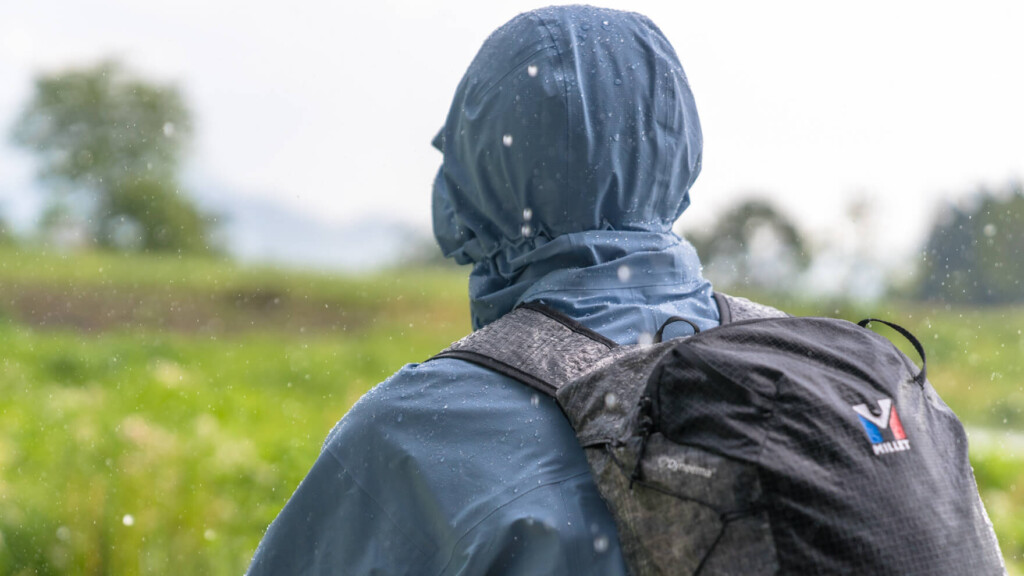
the "Law of 3" that is said in the world of survival , if a person cannot maintain an appropriate body temperature, they will be in danger of their lives within three hours. It refers to a state of "hypothermia," but there is no need to freezing cold for hypothermia to occur. Even in the middle of summer, anyone can develop hypothermia if they stay wet with their skin from rain or sweat for a long time. This is why outdoor activities with unstable weather (especially in Japan), which are said to be an essential item to wear to prevent rain.
However, when it comes to preventing rain and wind, there are several types depending on the level and function, and there are also jackets that can't adequately prevent rain, even if they look similar to rainwear at first glance. It is not a waterproof jacket (rainwear), but a jacket with a water-repellent function. A typical example is an outerwear called a windbreaker or softshell.
This water-repellent function refers to the function of applying a water-repellent agent such as fluororesin to each fiber, which processes the outer material into a property that is difficult to blend with water (hydrophobicity), and repels water droplets that adhere to the surface into a bead-like shape like wax (right in the photo below). At first glance, the water slides down on the fabric, making it seem waterproof, but in reality there is a gap in the weave of the fabric where water droplets pass through. For this reason, although it will repel any light rain for a short period of time, if it hits the water for a long time or as hard as possible, the water will eventually soak into the inside of the fabric and will not function as rain gear.
By the way, this water-repellent treatment is called DWR (durable water-repellent treatment), and plays an important role in ensuring that the performance of rainwear is 100% effective for a long period of time. However, if you use it repeatedly or wash it, it will inevitably deteriorate gradually (left of the photo below). If that happens, the jacket is completely useless against the rain. If the water-repellent properties disappear, the outer fabric will get wet with water and will not be able to provide moisture permeability. To restore your natural performance, regularly maintain it with a water-repellent spray or water-repellent material.
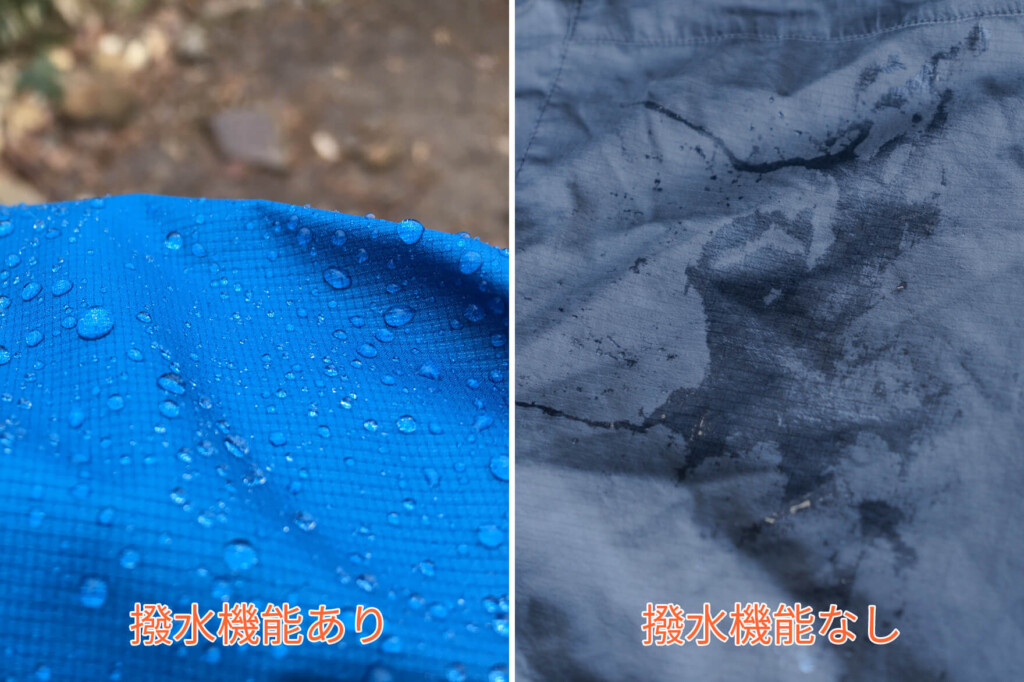
On the other hand, jackets (= rainwear) with waterproof properties are not only water-repellent on the surface, but also the fabric itself is made of something that does not allow heavy rain to pass through, so it can always prevent water from getting flooded from outside.
The zippers on the front and pockets are also designed to prevent water from entering, and the jacket's seams are also waterproof tapered from the inside, known as "seam tape" (photo below).

The seam tape attached to the seam part of the lining has been refined by each company, not only in terms of width and thickness, but also in whether the seam tape itself is breathable.
The first basic premise of choosing rainwear is to choose genuine rainwear that is not a water-repellent jacket. Incidentally, the rain jacket was adjusted for snowy mountains by using the hard shell (the boundary line is slightly vague). Both can prevent rain in the same way, but will not be covered here as the functions and features required differ.
Related Articles
Comparison of typical waterproof (water-repellent) outerwear and shell layers
Keyhon 2: "Not waterproof fabric, but waterproof and breathable fabric"
In the past, rainwear (raincoats) simply repelled water. It's not too difficult to keep water from getting inside clothes with a covering jacket, like the 500 yen kappa sold at convenience stores. However, raincoats made from traditional rubberized cloth and PVC (vinyl chloride) have almost no breathability, so even if they prevented the rain from falling, the sweat emitted from the body instantly got wet. The mountaineers continued to have a dilemma that wanted to prevent the rain but also wanted to get stuffy outside.
GORE-TEX magically solved this problem. Invented by Robert Gore in the 1970s, this material is a membrane called ePTFE (stretched polytetrafluoroethylene) made from a type of fluororesin, and is filled with over 1.4 billion fine pores per square centimeter. While the size of these holes is one-twenty-thousand-thousand-sized as water droplets, it is also about 700 times the size of water vapor molecules, allowing water resistance and moisture permeability to pass through from the outside, and water vapor from the inside. With the introduction of Gore-Tex, waterproof and breathable materials quickly became the mainstream of outdoor rainwear. And from the late 1990s when major patents ended, many manufacturers further accelerated the race to develop their own waterproof and breathable materials, and continues to this day.
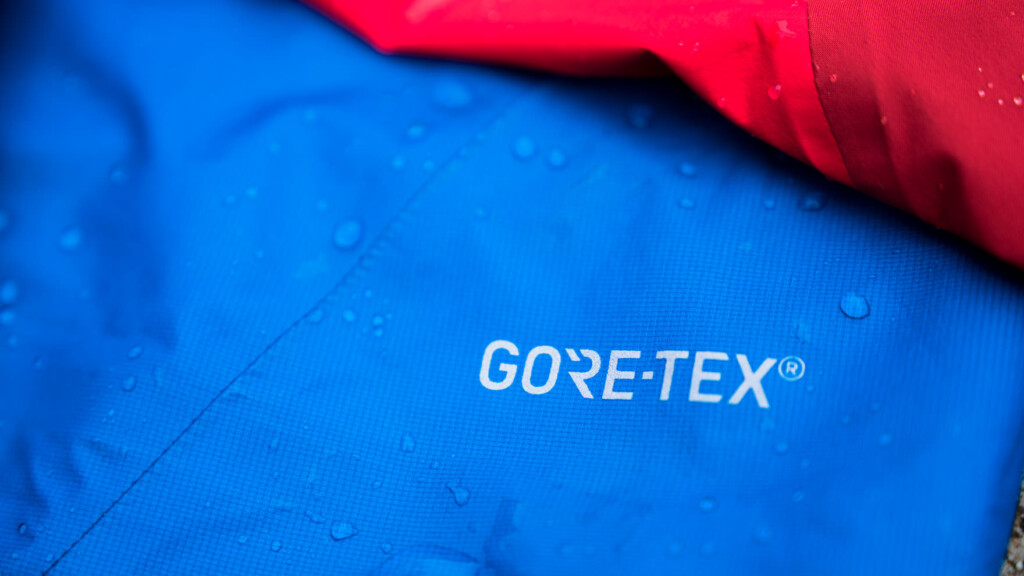
For more information about GORE-TEX, please refer to the following article, which I have heard from the people inside this site about.
Related Articles
Materials from other manufacturers that have appeared later are also made by laminating membranes and applying coatings to achieve similar functions, and although there are minor differences, the function is designed to block rain from outside and help to efficiently release steam (water vapor) (we cannot know because each brand's exact materials and processing methods are top secrets). The second essential premise of outdoor rain gear is to choose an outerwear made of waterproof and breathable fabric.
Incidentally, below is a list of the main brands of waterproof and breathable fabrics and their simple features. However, please note that the structure of rainwear is not simple, so not all rainwear made from this material will be its characteristic. Furthermore, since we do not compare all products uniformly, we cannot provide objective performance comparisons. Please use this as a reference when considering purchasing, as a way to understand the rough characteristics of each material.
| kinds | Features |
|---|---|
| GORE-TEX |
|
| Pertex Shield |
|
| eVent |
|
| Polartec NeoShell |
|
Point 2: Choose the fabric structure (layer) - Use different things by knowing what you are good at and how you are good at
When choosing rainwear, it is important to choose a type of waterproof and breathable membrane, as well as to choose a type based on the fabric structure.
Waterproof and breathable materials are merely membranes themselves, so they cannot be used as clothing. By pasting (laminating) or coating the fabric onto the front, back, or both of the membrane, it adds durability, comfort, and ease of movement, making it a jacket. Currently, it is safe to assume that there are three ways to combine these layers: 2L (layer), 2.5L, and 3L. Not only does the difference in fabric type and thickness of the rainwear, but also the difference in layers allow for optimal variations for various activities and purposes.
Below we will explain the advantages and disadvantages of each.
3 layers

The three layers are structured in which two separate pieces of fabric are sandwiched between both sides of the waterproof and breathable membrane. As you can see, it is the most durable. The lining fabric also has the advantage of moisture wicking and softness. The fabric, which was said to have been stiff and stiff in the past, has become much more flexible, and the three layers are probably the best in terms of comfort. However, this tends to be bulky compared to other structures. The price is also relatively high. Conversely, if this three-layer structure is thin and lightweight, or is low in price, it also means that it is of considerable quality. It is worth noting that, as evidence, most of the top models introduced here have a three-layer structure.

2.5 layers

The 2.5-layer jacket features a single piece of fabric on the outside (outer material) of waterproof and breathable material, and a very thin protective coating on the inside (lining) to prevent dirt and sweat from damaging the inner material. 1 means that it is too thin, so it means "0.5 layers*".
*It is noted that depending on the manufacturer's opinion, some brands also describe the same structure as "two layers," so this is really confusing.
The advantage of 2.5 layers is that they are lighter and more compact than a three-layer structure. This is a popular option for hikers and climbers looking for lighter rainwear. However, this lining protective film often lacks flexibility of about three layers and is not very comfortable to the touch, making it a clear drawback (there are some models that have been improved recently).

2 layers (membrane + outer material)

Two layers, which are simply pasted with protective outer material on top of the membrane, are the most basic of these rainwear. Although it is called two layers, in reality, you usually need a mesh liner to protect the inner membrane layer of the jacket. For this reason, even two layers cannot be made very light, and is generally seen in entry-level rainwear or winter waterproof and cold-resistant jackets with padding.
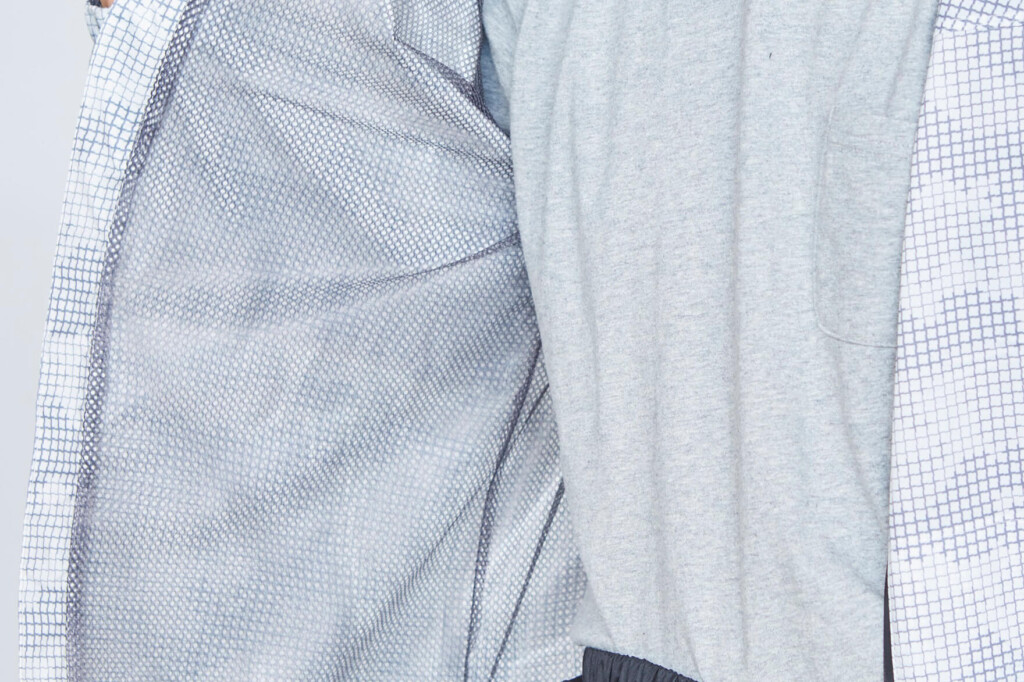
2 layers (membrane + lining)

However, the only new fabric from GORE-TEX called "SHAKEDRY" can be said to be a two-layer fabric with a special structure. The two layers are two layers, but this one has no outer material, meaning that the membrane is almost exposed, and instead it has a two-layer structure with tricot fabric attached to the lining to improve comfort, durability and moisture wicking. The advantages of this are the high lightness and moisture permeability of the lack of the outer material, and the sustainable water repellency of the outer material, which makes full use of the hydrophobicity of the membrane. On the other hand, the durability is clearly lower in the sense that the membrane is exposed. This type is suitable for mountain sports and athletes, where the highest performance is required even in a short period of time.
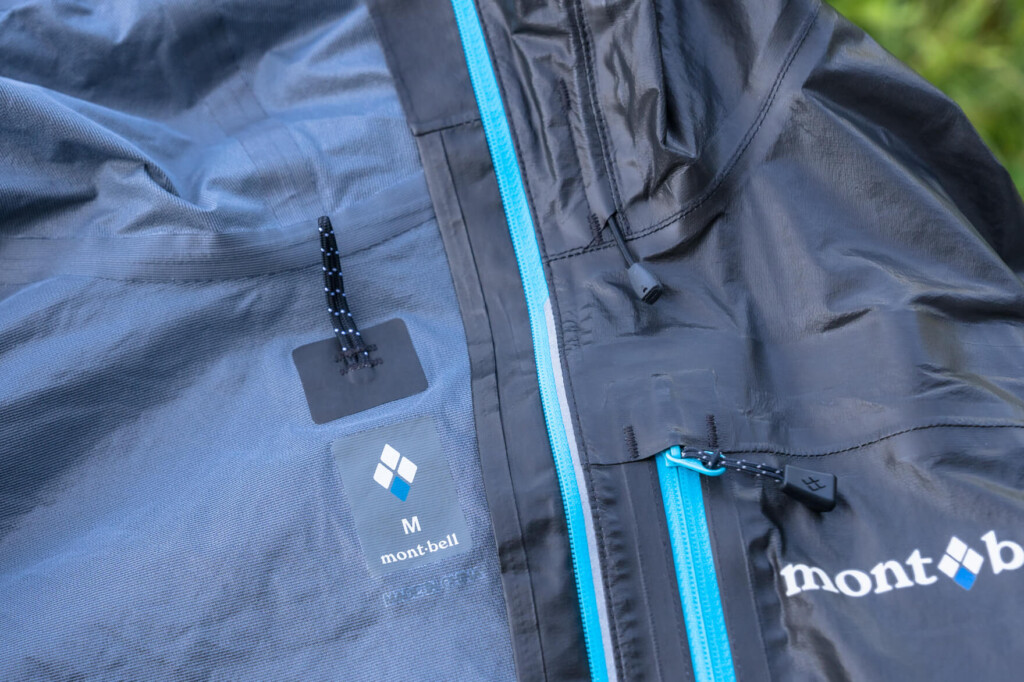
Comparison of characteristics based on fabric structure (layer)
| kinds | 3 layers | 2.5 layers | 2 layers (membrane + outer material) | 2 layers (membrane + lining) |
|---|---|---|---|---|
| Waterproof | ◎ | ◯ | ◯ | ◯ |
| Breathability | ◎ | ◎ | ◯ | ◎ |
| Comfort | ◎ | ◯ | ◯ | ◎ |
| weight | ◯ | ◎ | △ | ◎ |
| Durability | ◎ | ◯ | ◯ | △ |
| Price range | △ | ◯ | ◎ | △ |
Point 3: Waterproofing performance - Check the overall jacket construction rather than numbers -
I explained earlier that waterproof jackets that are not just water-repellent can prevent rain, but in reality, even among waterproof jackets, there are differences in waterproof performance depending on the model.
One of the criteria for indicating its performance is the "water pressure resistance" value of fabrics, expressed as "10,000mm" or "20,000mm or more" published in some models. This is measured by a test to see how much water pressure the fabric can withstand water that is about to soak, and the value indicates how high it can be withstanded by pouring water into a column 1cm square in diameter (without water soaking).

However, it is important to remember that this number simply indicates the water resistance of the clothing, and this alone does not determine the overall waterproof performance of the clothing. Of course, it is advantageous to have a high water resistance, but various factors can affect the waterproofness of rainwear, such as the thickness of the front and back fabric, the construction of the zippers, cuffs and hoods, and the quality of the seam tape.
Therefore, on this site, we recommend that you keep water resistance to a level of "it can tell whether it has met the minimum standard" as a guideline when evaluating waterproof performance.
For example, if the water resistance value is 10,000mm or more, it is a perfect match for outdoor use. If it is less than that, it will be difficult to endure heavy rain in nature. However, the 10,000mm is the minimum value for outdoor use. It's likely that it's not that safe. If this is more than 20,000mm, it would be safe to use it for tough, long-term climbing purposes (but assuming that the rest of the equipment is well-built). I think you should just stand there like this.
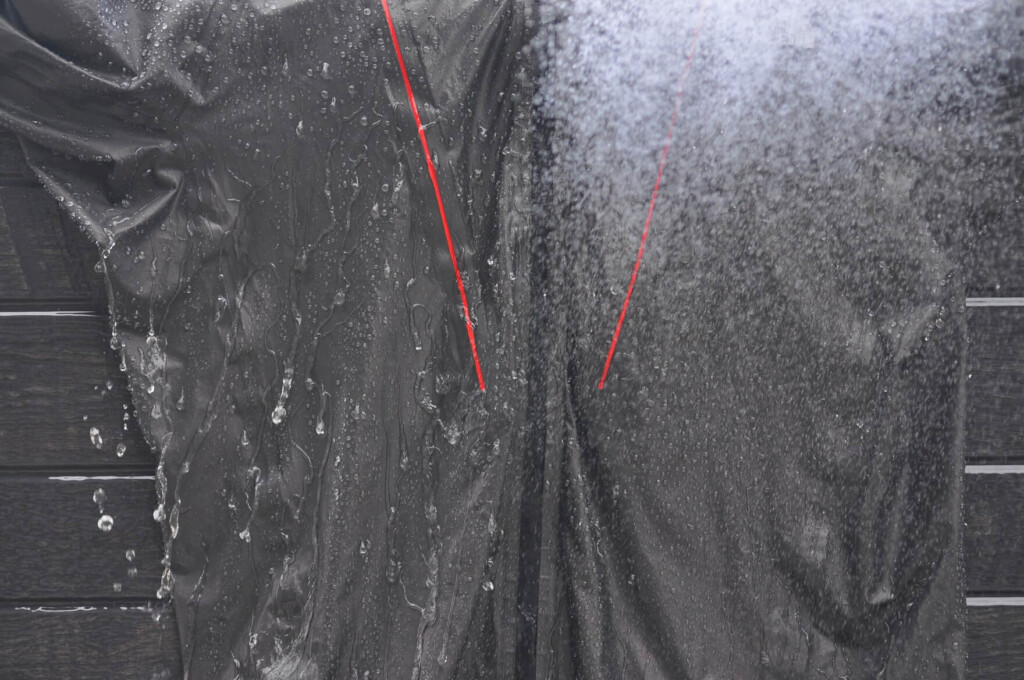
The water pressure during heavy rains is considerable. In areas with heavy rain and high mountains, you should choose rainwear with a high water resistance so that it can withstand more heavy rain.
Regarding waterproofing, it is important to consider not only the performance of the fabric, but also the high water repellency, whether the hood fits all over the face, the height of the collar, the length of the brim, and the sealing of the sleeves and hem, as well as the high protection against rain throughout the clothing.
Point 4: Relaxation (breathability) - Be careful of the new trendy "breathable" jacket -
As I explained earlier, breathability, a function that eliminates stuffiness inside clothes, is an essential feature that is indispensable for outdoor rainwear.
The good news is that just because it is breathable doesn't mean there is something you have to compromise on (other than price). Therefore, if you are allowed to pay, it is recommended to choose rainwear that is more breathable. Safety and comfort will definitely improve.
However, there is a question of whether people who like to hike at their own pace need top-level breathability. Of course, a high-breathable model is not a good option in any case, from a cost-effective perspective.

In search of even greater comfort, we will move forward with breathing, one step ahead of breathing.
With the spread of new activities that have a greater amount of activity in a shorter time, including trail running, various types of new materials with excellent breathability have been appearing one after another. With this huge trend of "more breathability," the evolution of waterproof jackets with breathability has been particularly attracting attention in recent years.
To make it easier to understand, I will touch on the mechanism by which traditional waterproof and breathable clothing eliminates stuffiness. The steam inside the clothing is released outside by taking advantage of the property that water vapor moves from the high temperature area (within the clothing) to the low temperature area (within the clothing). On the other hand, if there is no temperature difference (where you are cooled down), water vapor does not move = the stuffiness inside the clothing is hardly resolved.
In contrast, breathable rainwear allows air to pass through the walls of clothes at all times regardless of temperature difference (photo below).
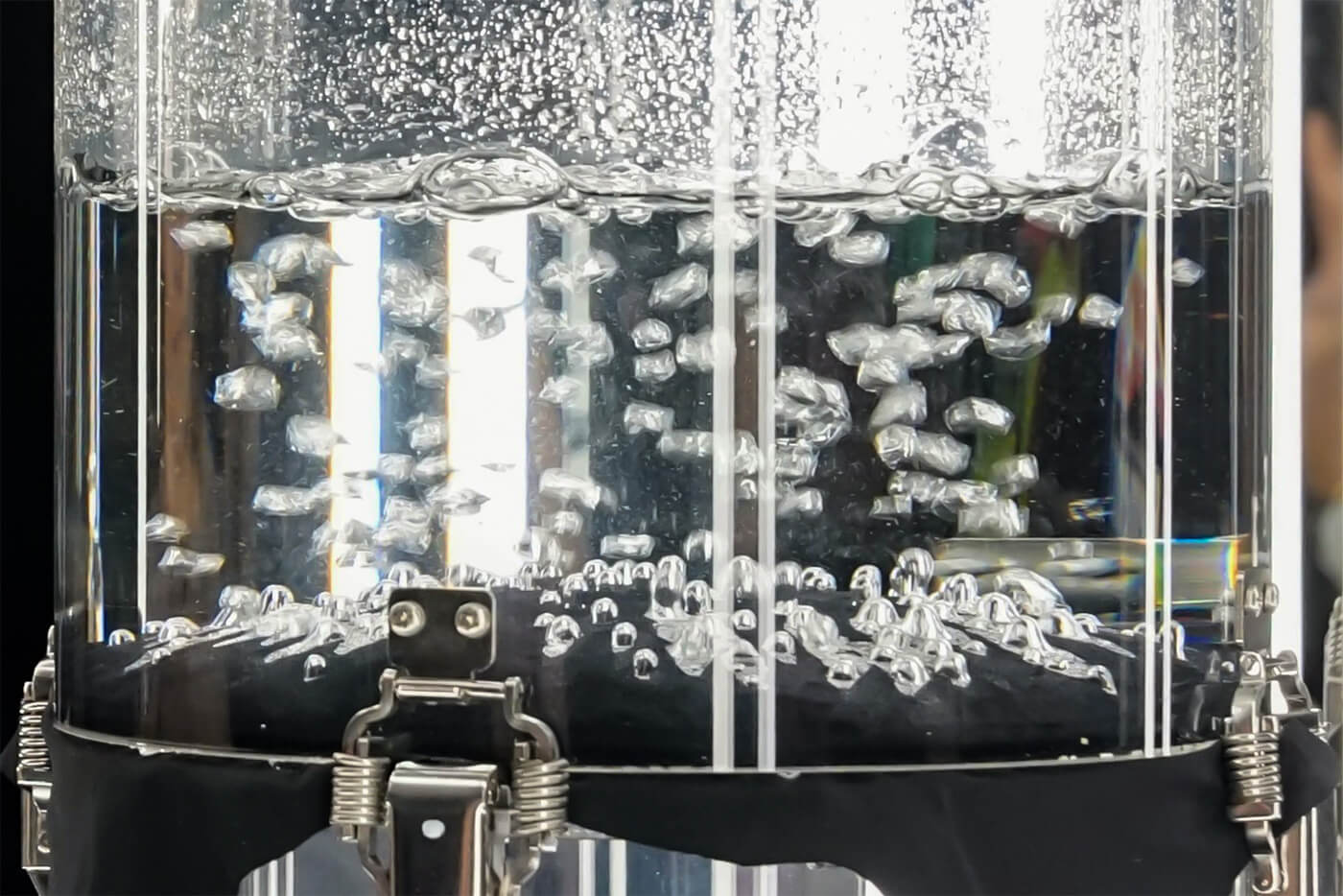
A demonstration of waterproof and breathable materials. The water on top of the fabric does not soak, and the air pushed out from underneath passes through the fabric (from the ISPO 2019 THE NORTH FACE booth).
Here, in the sense that not only water vapor particles (water molecules) but also air particles (gas molecules), this means that sweat is no longer possible (easy to eliminate stuffiness) than ever before. New, breathable waterproof membranes, such as Polartec Neosell , THE NORTH FACE FUTURELIGHT , Toray & Teton Bros. Täsmä , and PERTEX SHIELD AIR
By the way, you may be wondering, "When it's ventilated, does it mean that it's soaking like fleece when the wind blows?", but for now, it's fine. Even though it is breathable, the wind that hits your clothes does not pass through them without any force. In that sense, it is safe to assume that windproofing is still possible.

Things to note about ventilation rainwear
So, is this "ventilated rainwear," which is expected to be a game changer in the rainwear world, likely to become the "leading star" of the future? The story isn't so simple. This ventilated rainwear is equipped with the latest technology, and has some characteristics that are hard to overlook.
It is certain that the waterproof and breathable membrane allows more air to pass through than traditional waterproof and breathable membranes, and in theory it is less likely to get stuffy. However, what you need to be careful about at this time is that air flows all the time regardless of the temperature difference inside the clothing (this is different from waterproof and breathable membranes, where gases move only from the higher to the lower temperature). Therefore, it would be fine if the cold outside air just lets in when it's hot, but even when it's not hot, the cold outside air will get in. In other words, waterproof and breathable clothing is "easily cold" for better or worse.
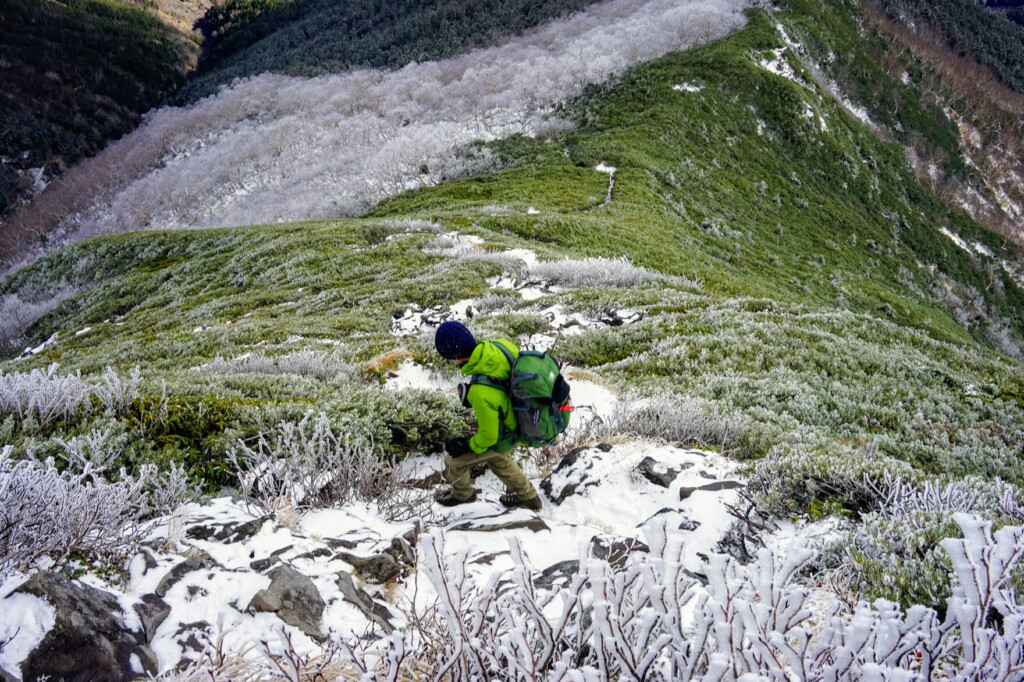
Of course, the actual heat and cold vary depending on the temperature difference between the outside air and the inside of the clothing, the thickness of the fabric, and the characteristics of the individual materials, so it is difficult to say for sure. However, it is clearly different to be delusional that "ventilated rainwear is newer and better." Breathable rainwear has great potential, but at the same time, remember that it has this property, and when wearing ventilation rainwear, consider providing a warmer layer than with a traditional waterproof and breathable shell.
Even if it's not easy to get stuffy, it's important to make the overall look more important than numbers.
Objective indicators (tests) for evaluating breathability exist, such as water resistance (A-1 method, B-1 method, RET value, etc.). However, it is realistically impossible to accurately measure the actual difficulty of the jacket itself getting stuffy when worn on the field, which can vary slightly depending on the external temperature, humidity, air pressure, and the wearer's body temperature. For this reason, there are multiple tests that claim that "I am the most accurate," and the current situation is that each material manufacturer uses it based on its own views.
If it is difficult to objectively compare the difficulty of clothing from each other based on the specifications alone, we should consider the numbers as a reference, but as a reference, we should consider them as one of the many factors that judge how difficult it is to become.
Whether or not the clothing is less likely to get stuffy depends on whether there is a ventilation vent that allows you to swim the air in large quantities, and the size of the pockets occupying the clothing. In addition to the breathability of the fabric itself, if you check the elements we can see, you will be able to find a piece of clothing that is more of a performance you are looking for.
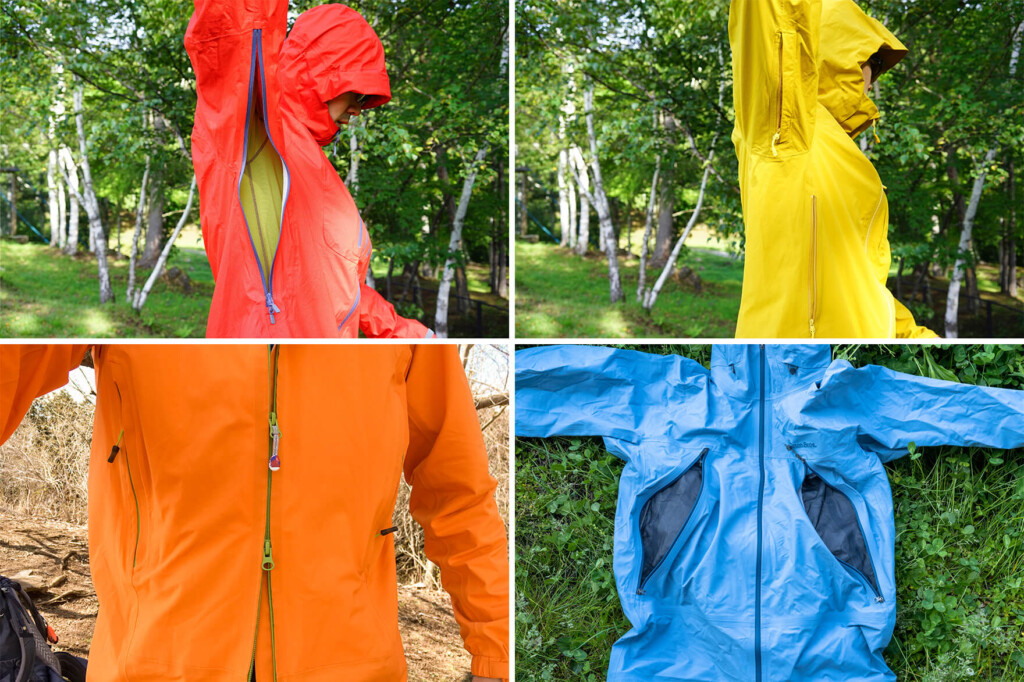
Point 5: Fit and ease of movement - Try on and try your body in action
How fit, feel, and how easy it is to move when worn?
Not only does anyone swing their arms big on trail runs, but everyone has the chance that they will have to wear them for a long time due to heavy rain, so it is important to carefully check whether they are comfortable to wear as clothes. In most cases, top brands are made easy to move with the three-dimensional cutting, and the clothes are made less likely to tense when moved. Make sure to get into the habit of checking the overall fit when you put it on, the tightness around the shoulders, and make sure your arms are slurping to make sure the hem doesn't slip too far. Over the past few years, there has been a lot of stretchy rainwear, with the fabric itself being stretchy. Models with stretching functions are likely to match any activity that requires a lot of movement, such as speed hiking, trail running, or climbing.
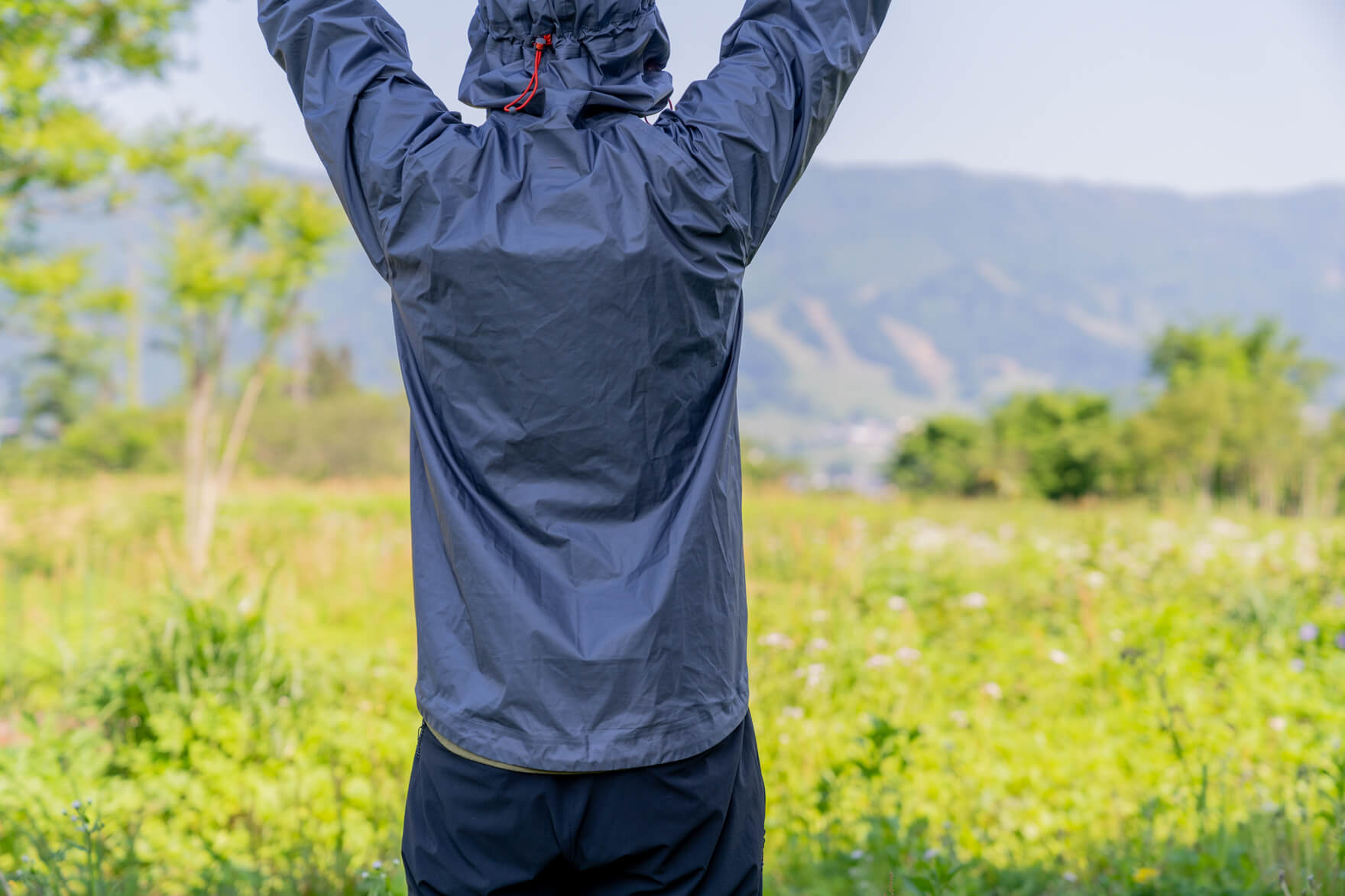
By the way, when climbing, rainwear is often worn underneath the weather, so the theory is to choose a size that has a little space, unless you prioritize fit to your body over wearing winter clothes such as trail running.
Is the hood easy to adjust or fit?
The most important thing is whether the hood is waterproof in the rain. As mentioned above, choose one that covers your jaw area well and has a size and hardness that is large enough to prevent storms from being defeated.
The key to this is the ease of fit. There are two types of outdoor rainwear hoods: one for climbing, one made considerably larger than the head size so that you can wear it over a helmet, and one for mountain climbing, one for running, one for lighter and more tailored to the size of your head. Even with a small type, you can wear a helmet over the hood, but it may be difficult to fit, so if there is a possibility of wearing a helmet, always choose a larger hood type that is compatible with helmets.
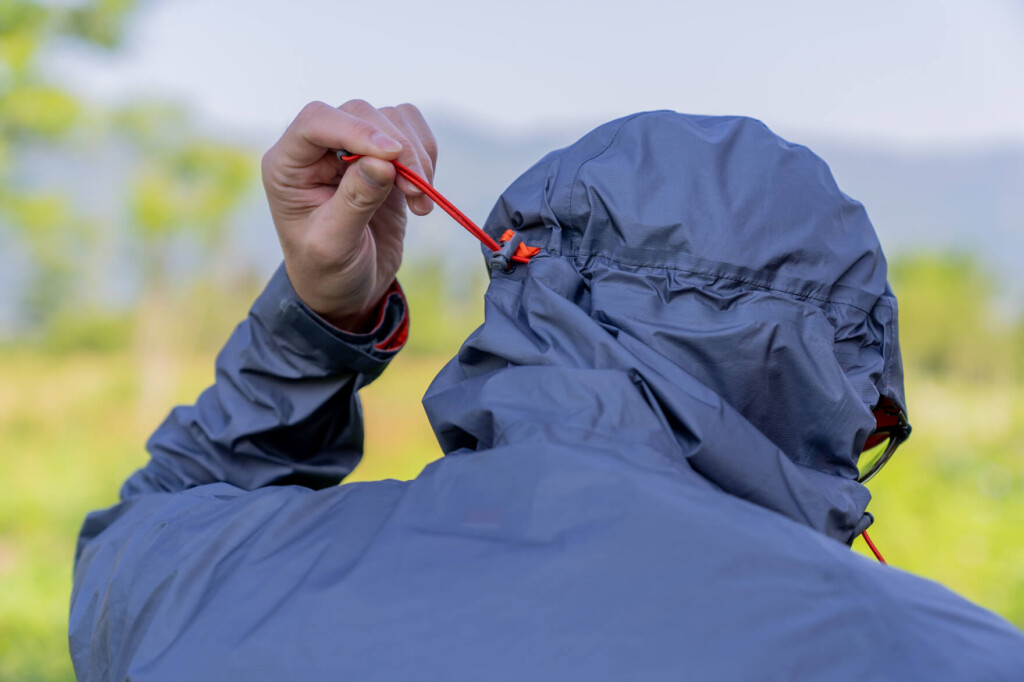
Regardless of which one is, it is best to adjust the size of the hood to suit the shape of your head (helmet). Furthermore, try and shake your head to see if it is easy to adjust, whether it can be adjusted in detail, and whether it fits your head as a result, and then try to check.
It's a surprising blind spot, but in my experience, it's common for people to feel the size of the hood when they put on the helmet over a helmet, which can interfere with the movement of their head. If possible, try to find out how it goes with a helmet before choosing one.
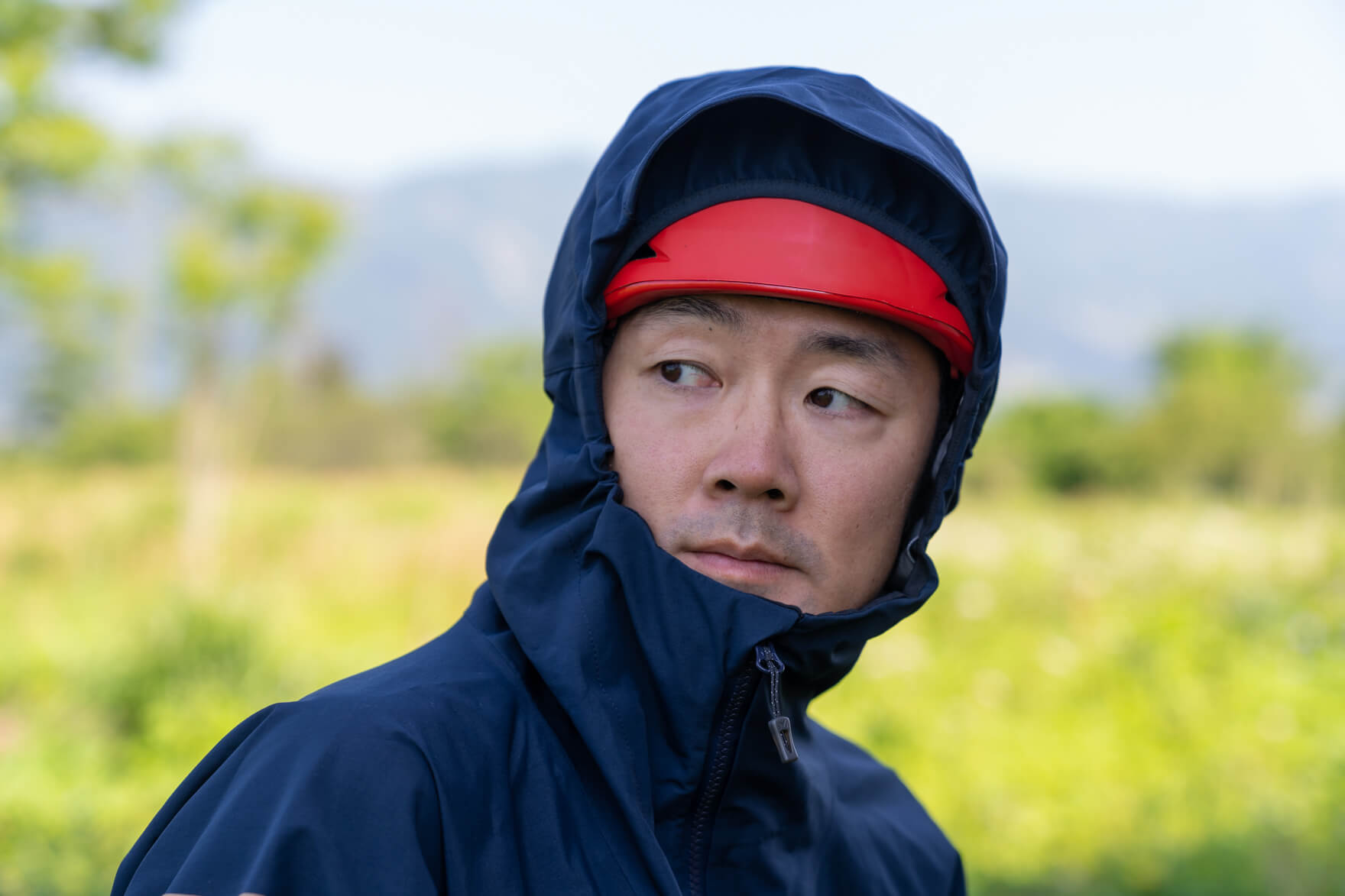
Others have hoods that can be removed with a zipper, or some can be wrapped and stored in the collar.
Point 6: Weight - Considering balance with durability
This rainwear is commonplace, so you just need to carry it around without wearing it, so of course it's better to wear it lighter. Light is justice. Starting from creating thinner, lighter, and more durable materials, we have been working to reduce the weight of the product in every part, such as zippers and seam tape, in grams.
However, in general, by making it lighter and more compact, we have no choice but to sacrifice waterproofing, cold protection, durability and convenience. It's not that which one is better, but it's important to determine how much protection and convenience you can sacrifice depending on the scene, purpose, and your ability.
Point 7: Pockets and other usability
Pay attention to the position and number of pockets
No one would find it inconvenient because of pockets. If your outerwear has a pocket, it can be used as a storage space for things you frequently take out and valuables, so it's definitely convenient as long as you have it.
However, you need to be careful about the location and number of pockets in rainwear.
Regarding positioning, if the left and right hand pockets are placed in a natural (lower) position like a regular jacket, while it is very easy to use, they will overlap when wearing the hip belt or climbing harness on your backpack. To avoid this, there are models that are placed higher in advance, so if you consider wearing them while climbing, you should choose a higher pocket (but this is not the case for those who don't use a hip belt or harness in the first place, such as trail running).
Next is the number. Some rain jackets come in a variety of options, including models with completely omitted pockets to reduce weight and improve breathability, models with one chest pocket, and only the left and right pockets, and chest and left and right pockets. For intense activities, it's fine to have only or no chest pockets, but if you're wearing it in a versatile situation, including everyday life, it's more convenient to have hand pockets on both sides.
However, the more pockets the more the weight it will become, and the sweat will also be removed (although this will also be reduced if the pockets are lined with breathable mesh). It's as convenient as it has, but it's best to have no unnecessary pockets. Even if it's not clothing, you can replace it by using other means such as a backpack or sacoche, so it's best to keep the pockets as minimal as possible.
Of course, it would be inconvenient if you only have a chest pocket to wear on a daily basis. Please choose the minimum number and positions required for the situation you are using.
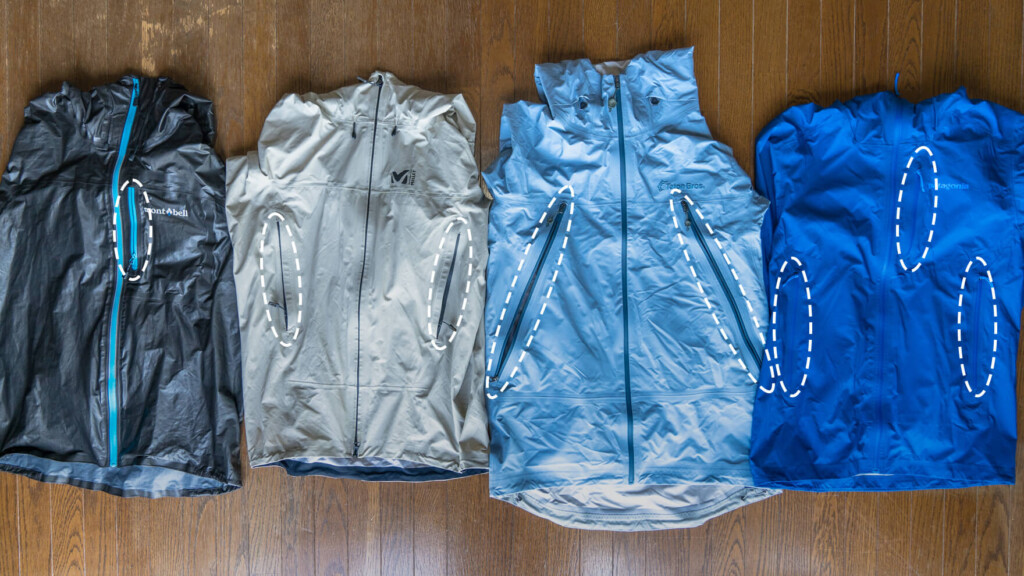
Packable jacket that doesn't require a storage bag
Some supple and compact lightweight rain jackets can be packed without using a stuff sack, and I call these types of clothing "packable" (this is a great help for me, who often lose stuff sacks). There are several packing methods, but these are two common patterns: one in which the pocket is pushed inside out (left of the bottom photo), and one in which the folded body is wrapped in the hood and the drawcord is squeezed together (right of the bottom photo). Either way, these features should be very welcome that reduce the weight of your luggage by eliminating waste even a little.
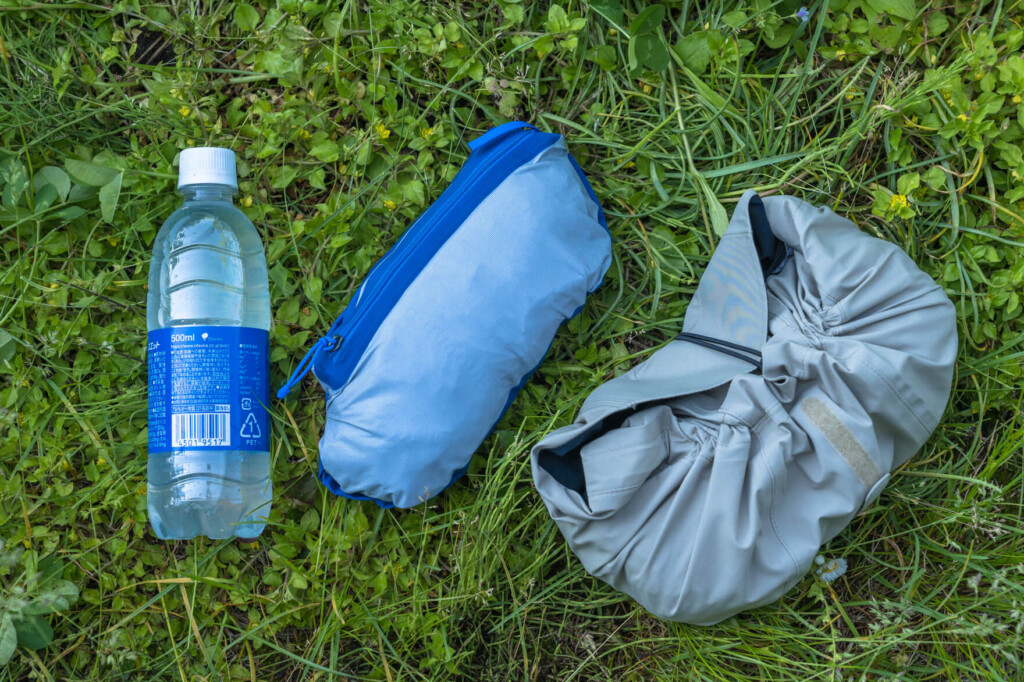
summary
I tried to speak as concisely as possible about the points to check when choosing rainwear, but (after all) it was impossible. Even after talking for so long, it's hard to say that the world of outdoor rain gear has spoken all about it. That's why rainwear is a complex and delicate field that has a particularly diverse range of functions among outdoor wear, packed with cutting-edge materials and mechanisms. Technology continues to evolve, and is also a hot category where fierce development competition between manufacturers unfolds. Through rainwear packed with high-tech and craftsmanship, I learned about the deep world of mountain tools. It's a world that's hard to get into, but I hope this will help you choose the perfect rain gear and will also give you a chance to enjoy the outdoors more deeply. So, enjoy the rainy mountains too.




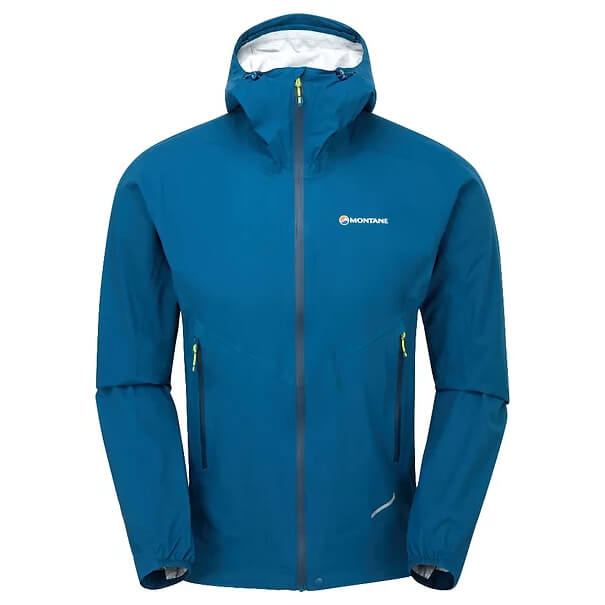



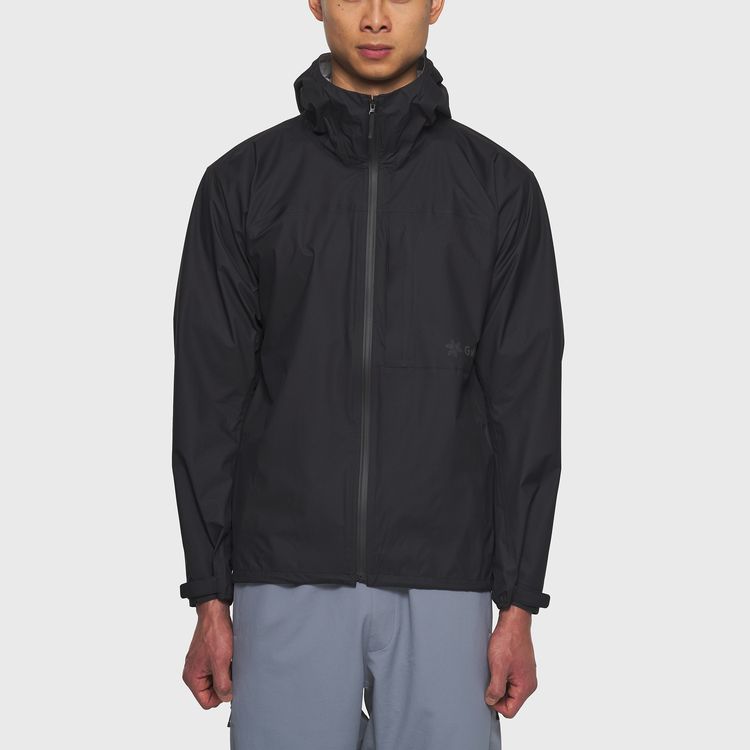


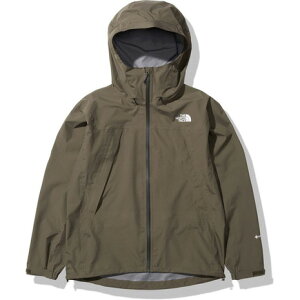
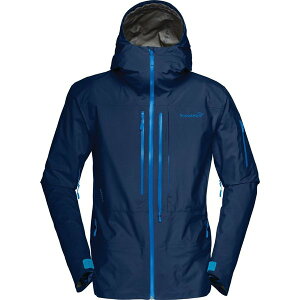


 [Fall/Winter 2025] This season's best hard shell jackets, essential for the harsh snowy mountains, and tips on how to choose them safely
[Fall/Winter 2025] This season's best hard shell jackets, essential for the harsh snowy mountains, and tips on how to choose them safely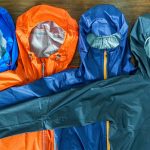 Ultra-lightweight rainwear you won't miss this season 2017
Ultra-lightweight rainwear you won't miss this season 2017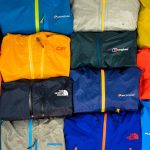 Comparison review: We compared ultra-lightweight rainwear that is great for mountain climbing and running [Summer 2016]
Comparison review: We compared ultra-lightweight rainwear that is great for mountain climbing and running [Summer 2016] [Fall/Winter 2025] We've selected the best synthetic insulation for fall/winter outdoor activities from approximately 200 models, and here are some tips on how to choose the right one.
[Fall/Winter 2025] We've selected the best synthetic insulation for fall/winter outdoor activities from approximately 200 models, and here are some tips on how to choose the right one.